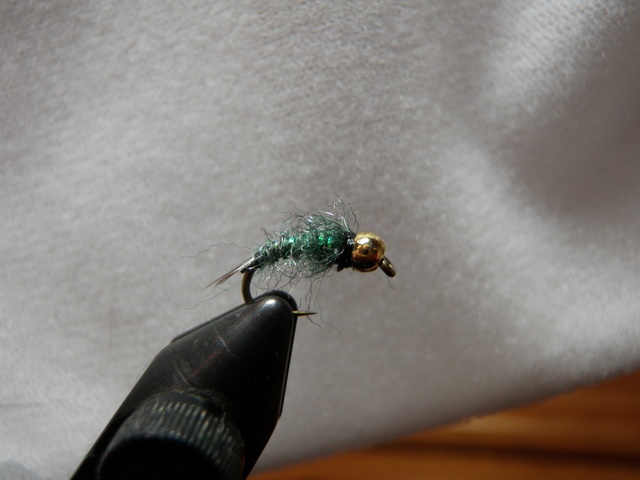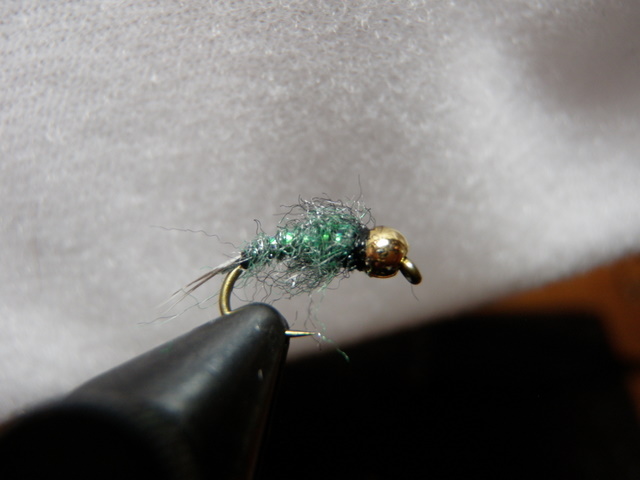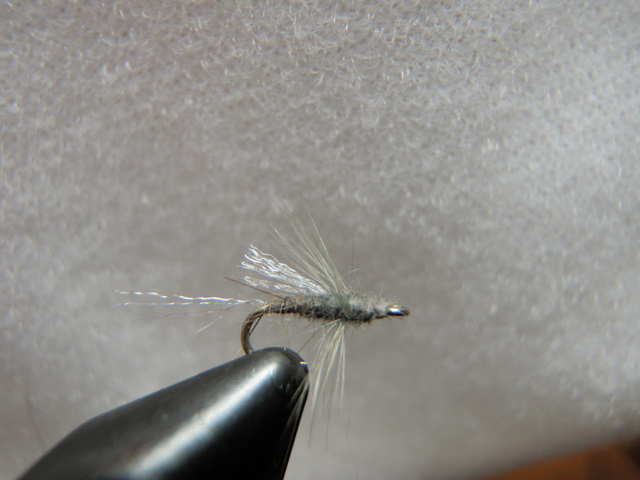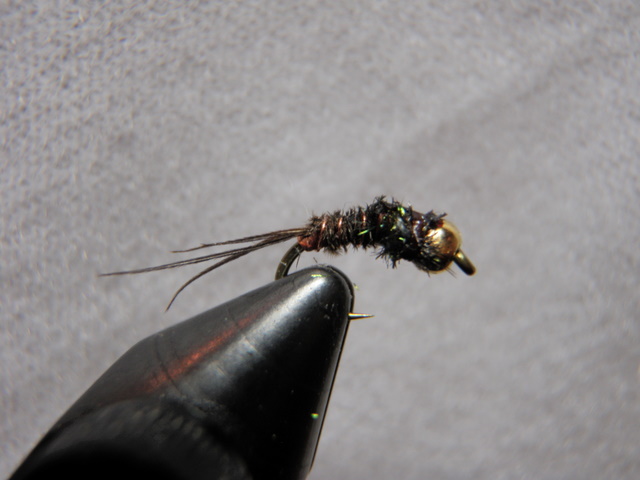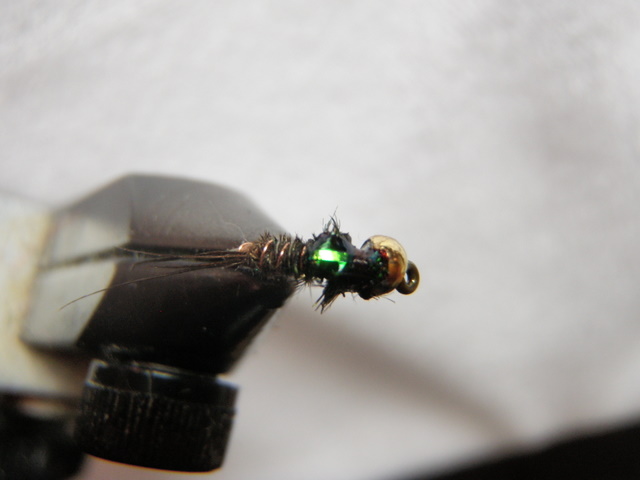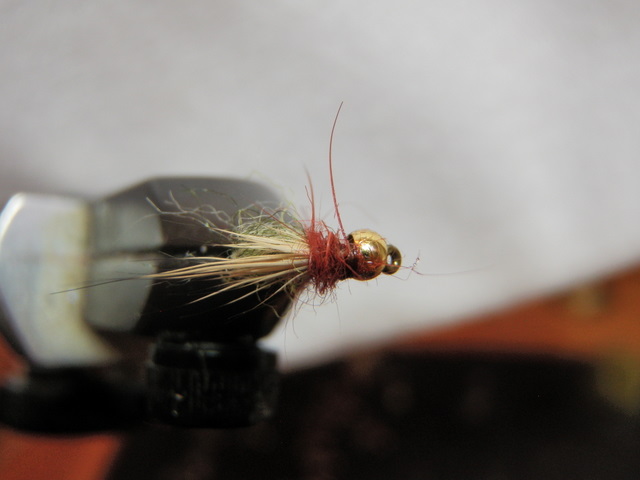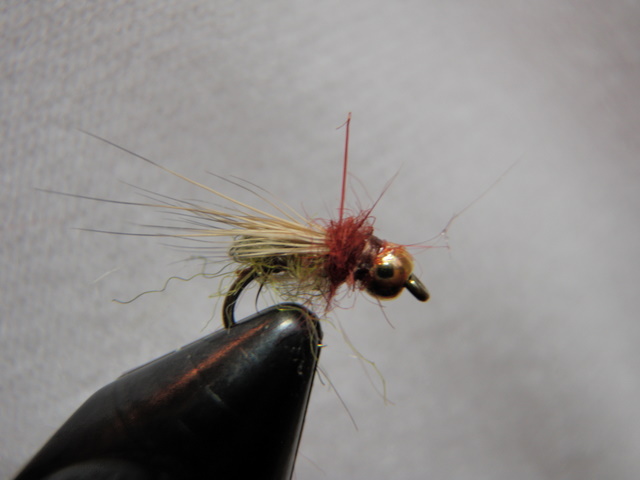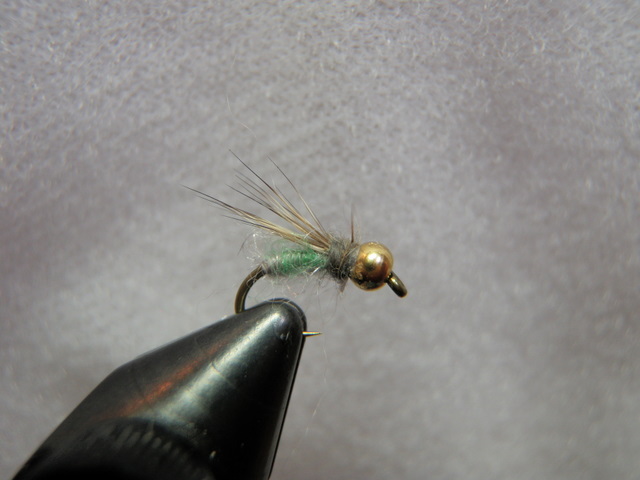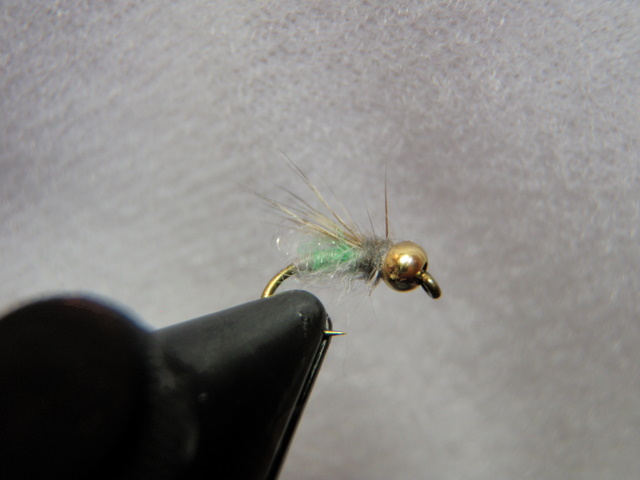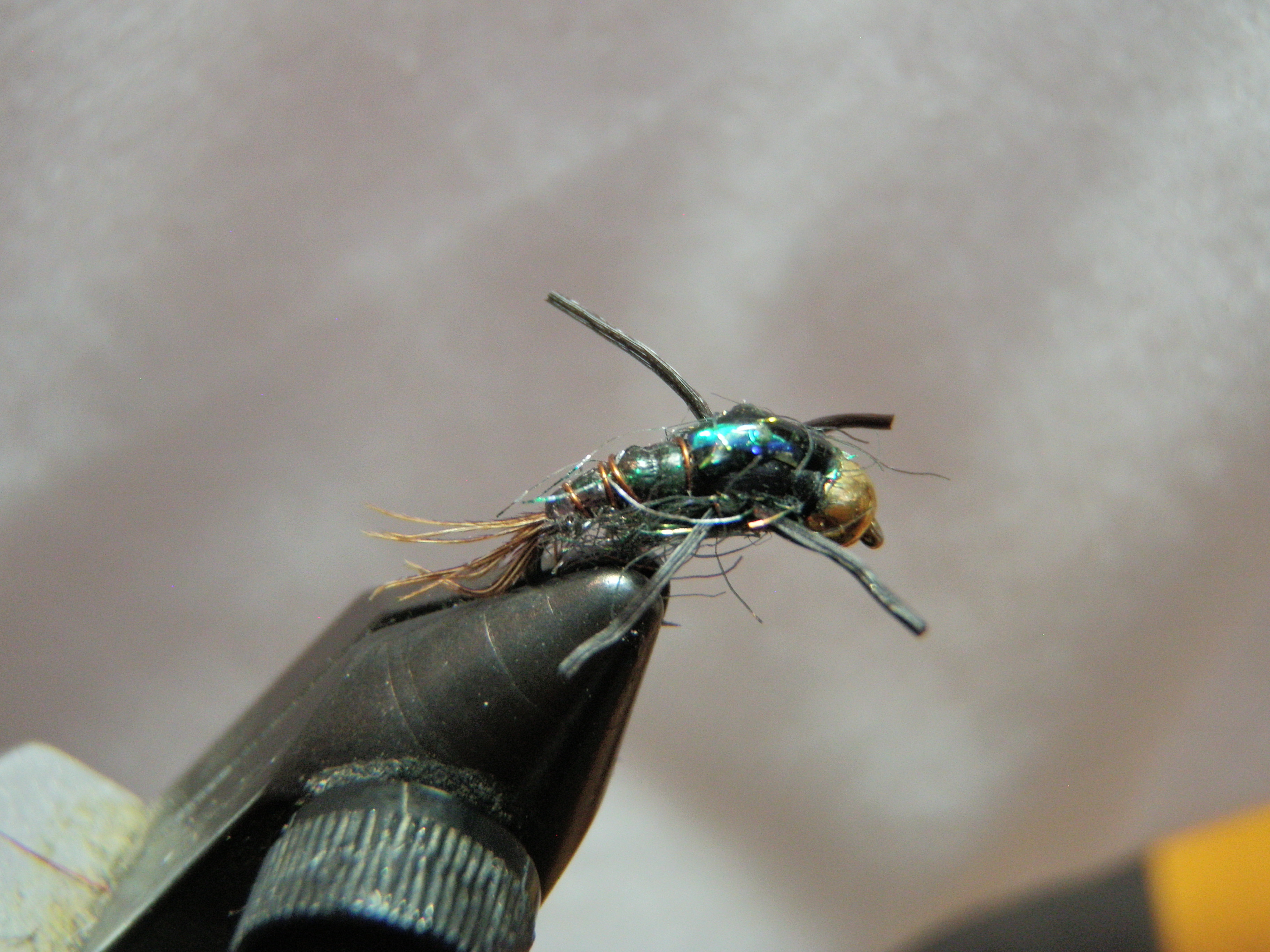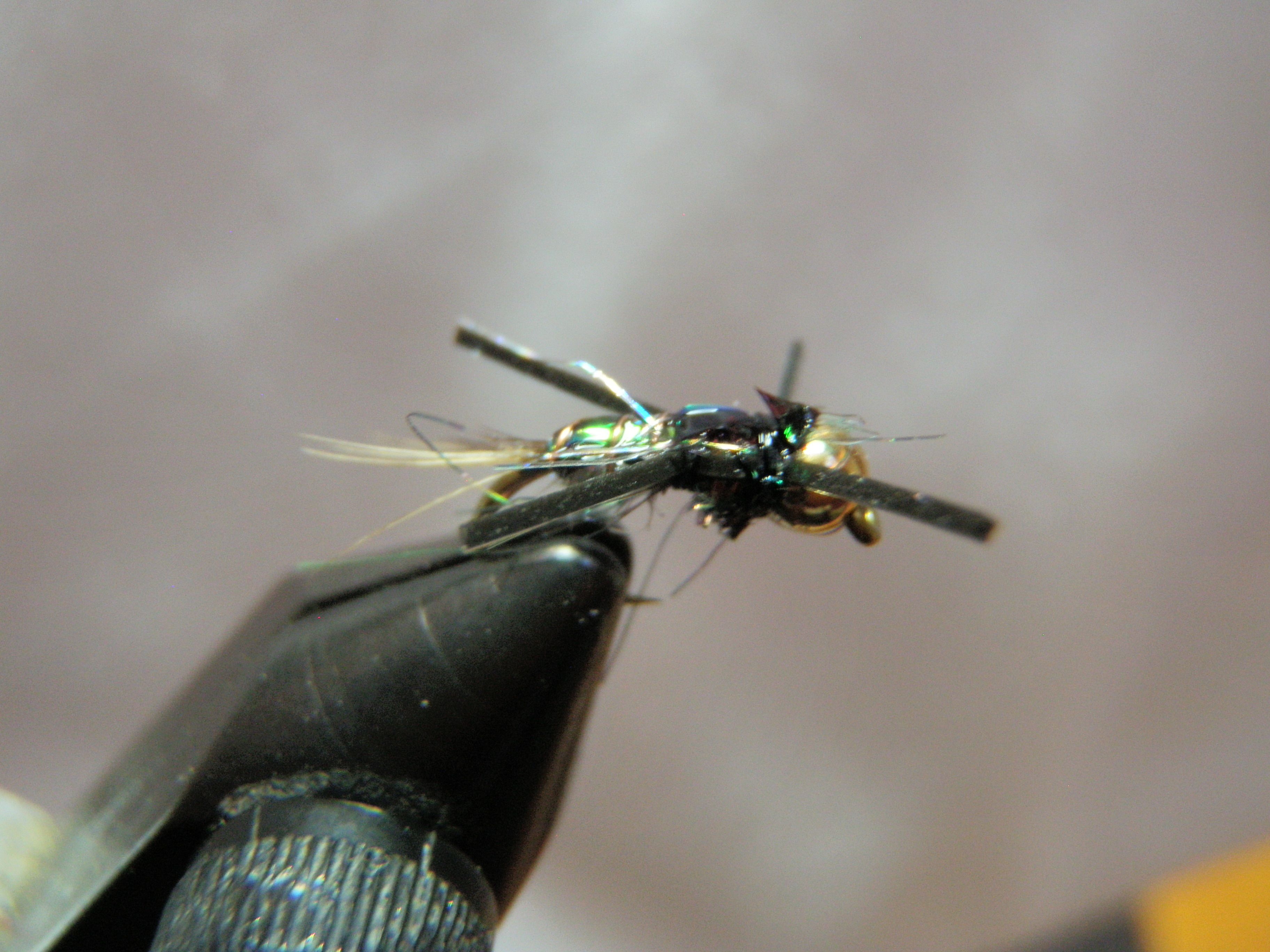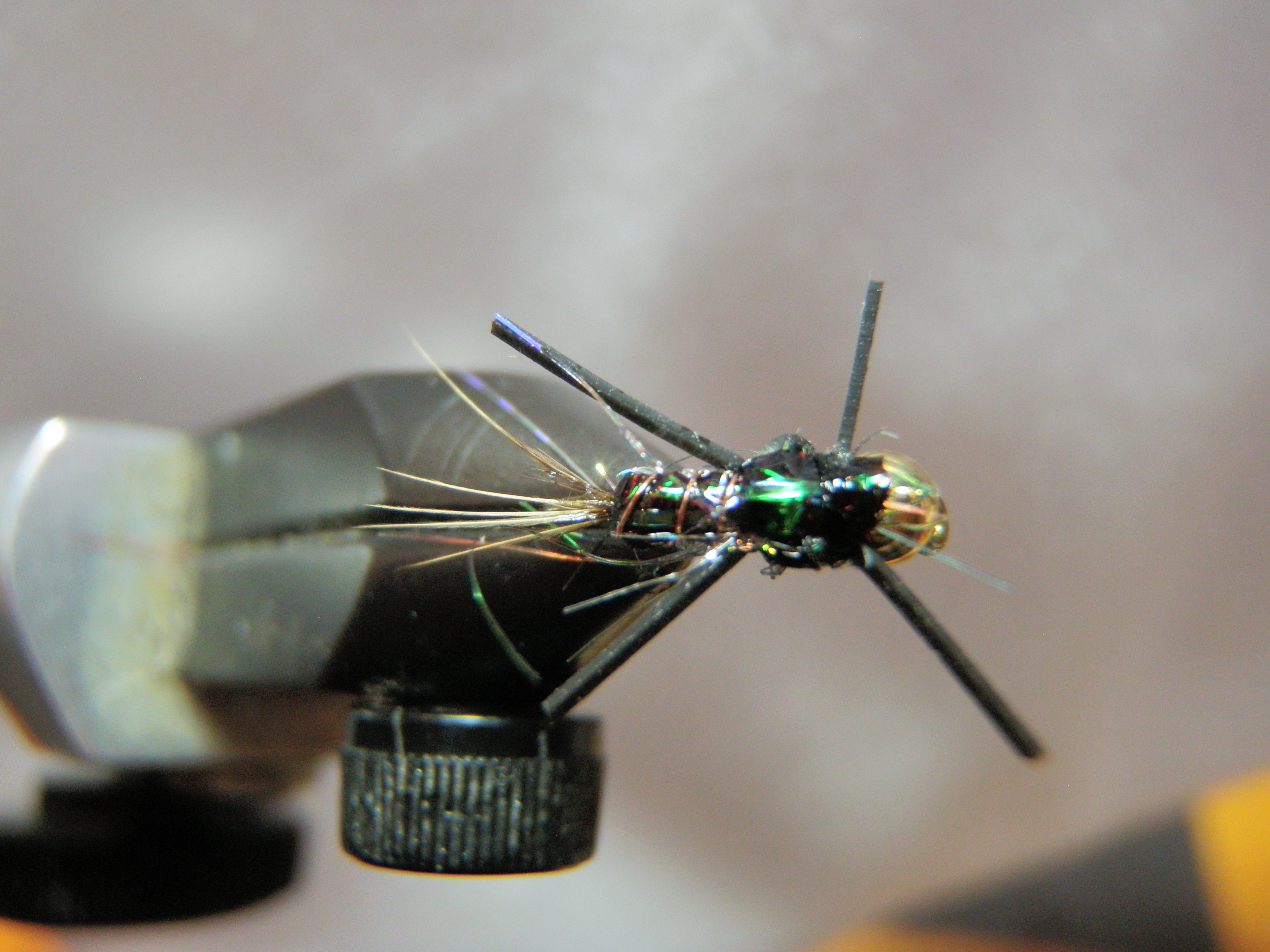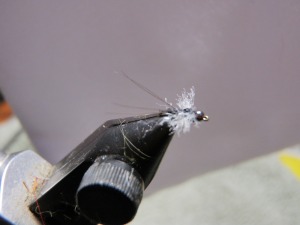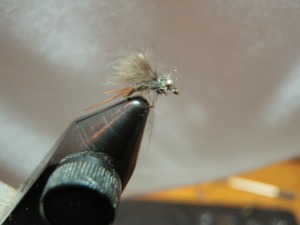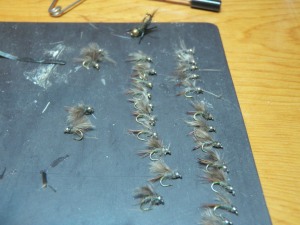Quite a few years ago I tied five to ten damsel nymphs made with light olive marabou on a size 12 long shank hook. I didn’t fish these frequently, but I liked having them available in my fleece wallet particularly for occasions when I visited a lake.
In June while waiting for the snowmelt to subside in Colorado I made a trip to the Rocky Mountain Arsenal warm water lakes. The first fly I tied to my leader was a damsel fly nymph as it was June and I observed a lot of aquatic vegetation. These were perfect conditions for damsel nymph migrations and hatching. I managed to land a small bass and decent crappie bass before losing my fly. At this point I discovered that only one damsel nymph remained in my fly wallet so I resolved to tie more during the coming winter.
Well that time was upon me, so I prepared to tie damsel nymphs. First I searched through my fly tying books and found a pattern in Charlie Craven’s book called the wiggle nymph, and another pattern called the twisted damsel in a book by Larry Tullis. Neither of these matched the ones I made previously, so I searched the internet and found one similar in style to the ones I tied before.
Next I made a list of the materials I required and discovered that I had dark olive marabou but none of the light olive that was listed in the fly recipes. The wiggle damsel was actually an articulated fly that required two hooks. I never made an articulated fly, but used several that were quite effective in Alaska, so I decided to experiment with a new damsel nymph.
I made a short trip to Bass Pro Shop on Friday night and purchased some small black beadhead eyes and 3X tippet to connect the two hooks, but Bass Pro did not have the desired light olive marabou. On Saturday afternoon after tying beadhead prince nymphs, Jane and I trekked to Old Arvada to Charlie’s Fly Box, and I purchased the highly sought after light olive marabou.
| Component | Material |
| Hooks | Tiemco 101 size 14 or 16 and Tiemco 3761 size 14 for front hook |
| Thread | Pale olive 6/0 |
| Body/Head/Wing | Pale olive marabou |
| Eyes | Black bead chain (extra small) |
| Connection | 3X fluorocarbon tippet |
On Sunday afternoon after watching the Broncos pull out another win over the Vikings, I sat down to manufacture wiggle damsels. I used a Mustad 9671 size 12 for the front fly and a standard size 14 dry fly hook for the rear. I tied 10 tails by tying down a clump of marabou fibers for the tail and then winding the clump forward to the eye. After whip finishing the size 14 hook I used wire cutters to cut off the bend and hook point and set these aside in a plastic cannister for subsequent use.
Next I clamped the larger hook in the vise and tied in the black mono eyes with figure eight wraps and then moved to the rear of the front hook. I clipped a one inch section of 3X mono from the spool, threaded it through the eye of the previously prepared tail section and then bound the monofilament to the front hook so that the tail now dangled from the rear. Finally I tied in a clump of marabou to the rear of the front hook just like I had done for the tail and then wound it forward, under the eyes and then back over the top of the eyes and finished off.

Wiggle Damsel
I can’t wait to fish these flies as they look like great fish attractors. The wiggle tail and undulating marabou fibers should make this fly appear to be alive all the time.

Weekend Production
Like this:
Like Loading...

